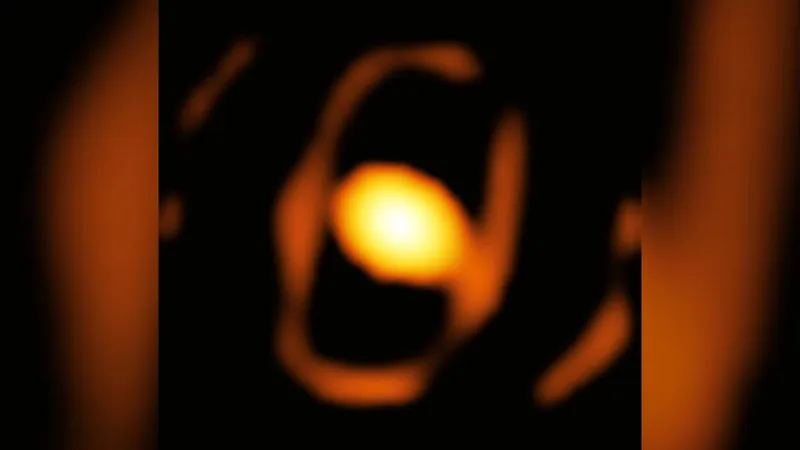
The Behemoth Star WOH G64: An Imminent Cosmic Catastrophe?
2024-11-26
Author: Wei Ling
Introduction
Astronomers have made a groundbreaking leap in their quest to understand the universe. For the first time, they've captured a stunning, close-up image of WOH G64, a colossal red supergiant star located outside our galaxy. What's even more thrilling? This behemoth is teetering on the edge of a supernova explosion.
Discovery of WOH G64
Utilizing the cutting-edge technology of the European Southern Observatory's Very Large Telescope Interferometer (VLTI) in Chile, researchers revealed WOH G64, nestled approximately 160,000 light-years away in the Large Magellanic Cloud. With a staggering size of about 1,500 times that of our sun, WOH G64 is hailed as one of the largest known stars in the universe. But this giant is also an elderly 5 million years old, a brief existence compared to most stars due to its accelerated fuel consumption.
Implications of the Findings
The newly released image, showcased in a study published on November 21 in the journal Astronomy & Astrophysics, indicates that WOH G64 may soon meet a spectacular demise. "An egg-shaped cocoon surrounds the star," explained lead author Keiichi Ohnaka from Andrés Bello National University in Chile. This intriguing finding is believed to be linked to significant material being ejected from the giant star prior to its expected supernova explosion.
Historical Context
The implications of this discovery are exciting, as co-author Jacco van Loon from Keele University notes, "This star is one of the most extreme giant stars of its kind, and any drastic change may bring it closer to an explosive end." Van Loon has observed WOH G64 closely since the 1990s and emphasizes the star's volatility.
Technological Advancements
Historically, capturing detailed images of stars beyond the Milky Way has proven challenging. Until now, astronomers have succeeded in acquiring only about two dozen high-quality images of distant stars, all within our galaxy. By adeptly harnessing the GRAVITY instrument, which combines light from multiple telescopes, the VLTI allows astronomers to discern finer details in faint celestial objects.
Recent Developments
In addition to its newfound image, the research team discovered that WOH G64 has dimmed notably over the last decade. This change is likely attributable to the star's egg-shaped cocoon, which consists of gas and dust released from its outer layers over thousands of years. Surprisingly, the cocoon's elongated shape was not expected and has piqued researchers' curiosity.
Ongoing Research and Theories
Two noteworthy hypotheses have emerged regarding this unusual shape: It might stem from the dynamics of how the material is expelled from the star, or the possibility exists that a smaller, unconfirmed star is orbiting WOH G64, exerting force on its cocoon.
Looking Ahead
As WOH G64 approaches its fizzling finale, scientists speculate that, if it remains intact long enough, the star will continue to dim over the coming years as it sheds more material into its surrounding cocoon. This slow fade could mean this might be the last chance for astronomers to capture such astonishingly clear images of the magnificent star.
Conclusion
Could we be witnessing one of the universe's most monumental events in real-time? Stay tuned, because if WOH G64 ignites into a supernova, it will become one of the brightest objects in the night sky—a cosmic display not to be missed!


 Brasil (PT)
Brasil (PT)
 Canada (EN)
Canada (EN)
 Chile (ES)
Chile (ES)
 España (ES)
España (ES)
 France (FR)
France (FR)
 Hong Kong (EN)
Hong Kong (EN)
 Italia (IT)
Italia (IT)
 日本 (JA)
日本 (JA)
 Magyarország (HU)
Magyarország (HU)
 Norge (NO)
Norge (NO)
 Polska (PL)
Polska (PL)
 Schweiz (DE)
Schweiz (DE)
 Singapore (EN)
Singapore (EN)
 Sverige (SV)
Sverige (SV)
 Suomi (FI)
Suomi (FI)
 Türkiye (TR)
Türkiye (TR)